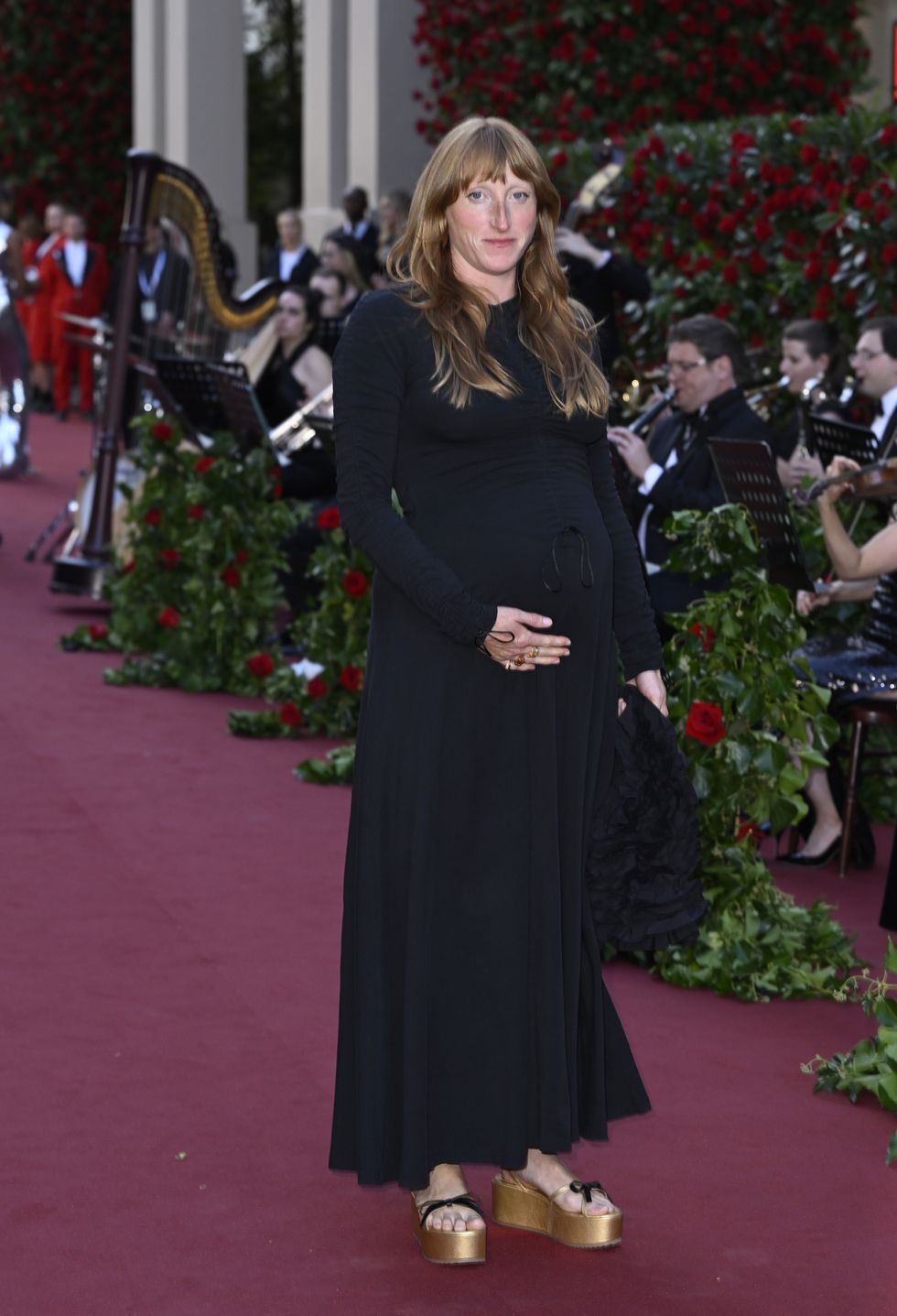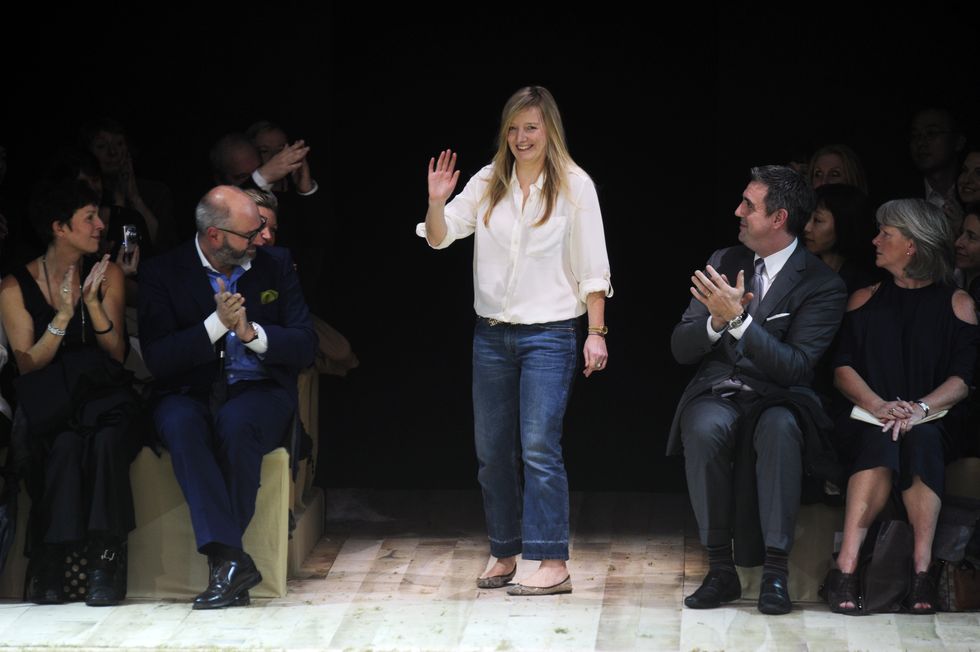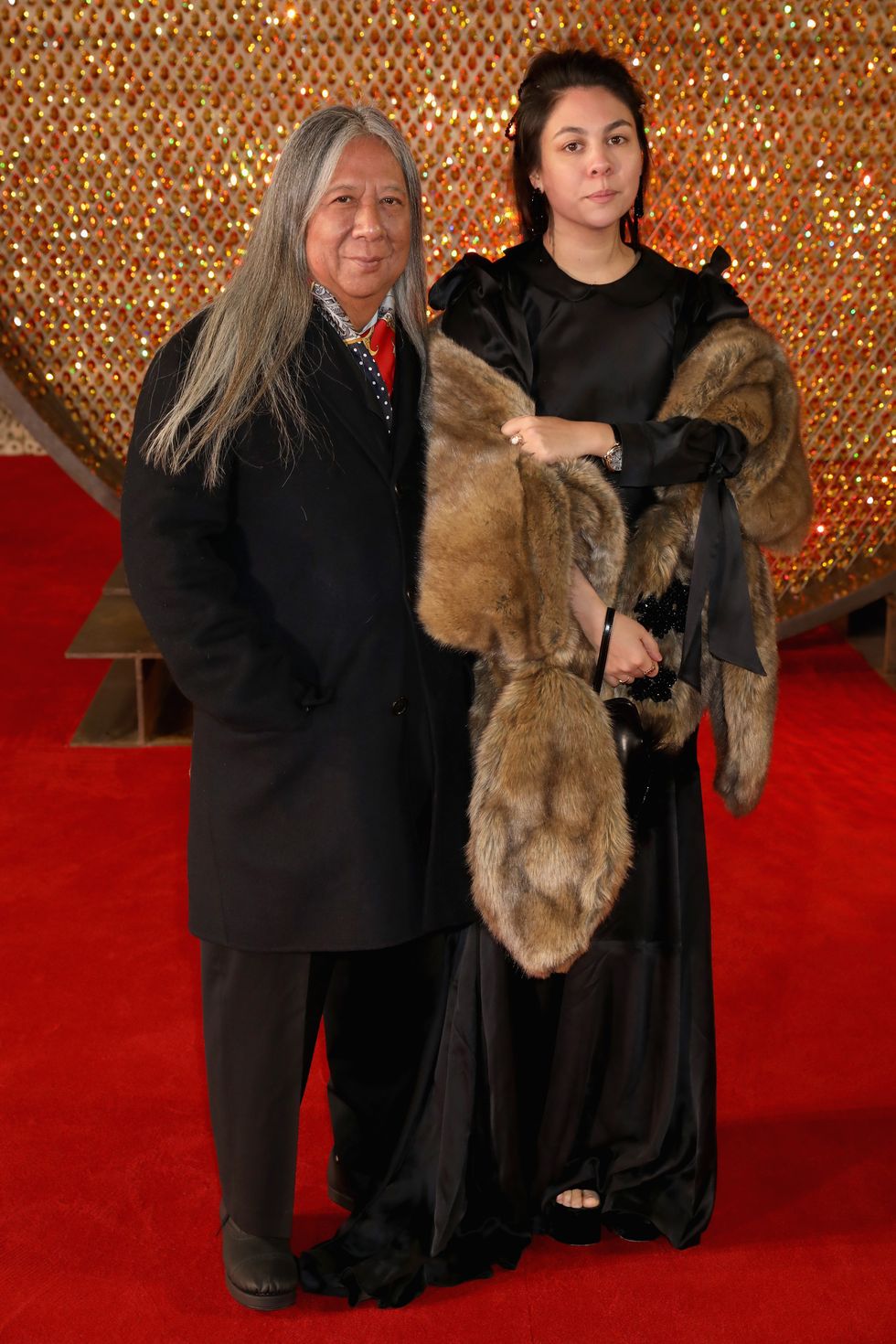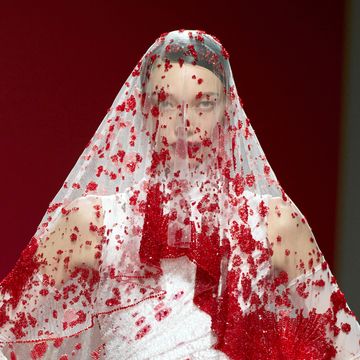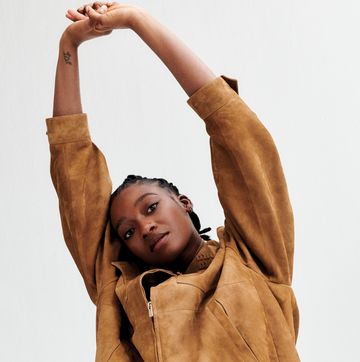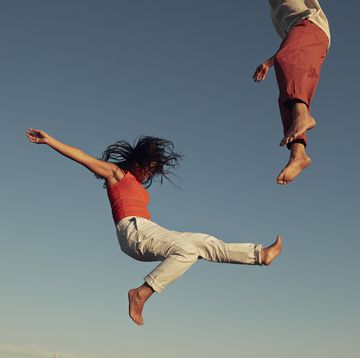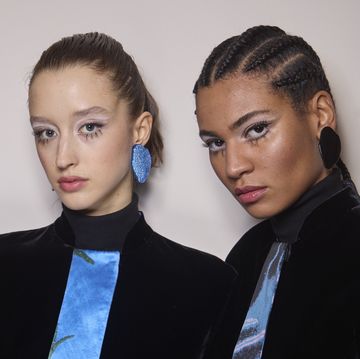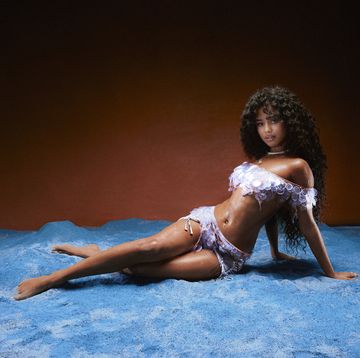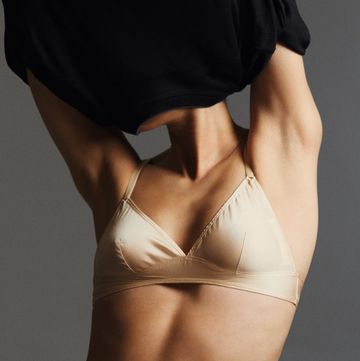The standout guest on the LFW front row at Molly Goddard’s AW24 show last month wasn’t a Netflix ingénue or a TikTok starlet. Rather, it was her 11-week-old daughter. Sleeping surreptitiously while cradled against her father’s chest (in an Artipoppe baby carrier, of course), her presence was a poignant reminder that, though Goddard was not yet out of the fourth trimester, she was still putting on a fashion show.
When the fashion carousel moved on to Paris a fortnight later, all eyes were on the incoming creative director at Chloé, Chemena Kamali, including those of her children, with one of her two sons gleefully jumping up from the front row to cheer on his mum as she took her final bow. 'I was backstage after the Chloé show and saw Kamali having a very sweet moment with her son before she spoke to us,' shares Bethan Holt, The Telegraph’s fashion director. 'She said he was telling her he understood now why she was always working and that actually made for a very sweet moment.'
On the one hand, the presence of both Goddard’s mewling babe and Kamali’s enthusiastic preschooler at their shows speaks to the continued pressure on working mothers to 'have it all'. Yet at the same time, Goddard and Kamali are very much the exception to the rule when it comes to the visibility of mothers within the fashion industry. The presence of their offspring is a reminder that it is possible for women to balance both motherhood and their careers, if the proper support is in place from their partner and employer.
'When women at the top of their game professionally are very public about the fact they have kids and celebrate it, it's hugely empowering,' says Frankie Graddon, author of the MUMISH newsletter. 'It acts as a declaration that even though someone has had a child they can still be talented and capable and absolutely shouldn't be overlooked or written-off - which happens all too often.'
FIND OUT MORE ON ELLE COLLECTIVE
For many women in the industry, the cliché of having a 'passion for fashion' rings true, which is one factor that drives them back to work so quickly. 'My job in fashion PR was a huge part of my identity,' shares Caroline Nelson, a mother of one who runs a PR and communications agency. 'Stepping away from this was much more difficult than I expected.'
Unlike other industries, Holt thinks that fashion is more welcoming of mothers due to the large proportion of women it employs. 'I think because so many women work in fashion, our children are a huge topic of conversation and we’re realistic that we are doing these jobs at the same time as trying to be good mums,' shares Holt. 'I applaud women, especially designers who work for themselves or who have a huge job, who include their children in their shows and work. I can’t imagine how difficult it would be to work in an industry where you feel you can’t acknowledge the existence of your child.'
However, there is no denying that for years now fashion has been guilty of the so-called 'motherhood penalty'. At the beginning of the 20th century, the founders of many of the world’s most famous fashion houses were women: Coco Chanel, Elsa Schiaparelli, Gaby Aghion of Chloé, but it’s not the case today.
Indeed, in October last year, the Financial Times published a report that highlighted the lack of female creative directors at luxury designer brands, with just 27% being women. Just a few weeks earlier, Kering had found itself at the centre of a social media storm following the appointment of Seán McGirr to replace Sarah Burton at Alexander McQueen, with all six of the conglomerates’ designer brands headed up by white men.
There are encouraging signs that things are changing however, with many fashion houses now offering enhanced paid maternity packages to employees. Burberry, for example, announced in 2021 it would offer 18 weeks of paid maternity leave, compared to the UK average of six.
An example of a designer at the top of her career who stepped back to focus on raising a family is Phoebe Philo, credited with transforming the fortunes of Celine between 200 and 2017. Her two youngest sons, Marlowe and Arthur, were born at the height of her success, with Celine even cancelling its 2012 show due to her pregnancy. Yet after a few years of juggling the two roles, Philo decided to leave to focus solely on parenthood. Six years later, with her youngest now 11, she made a triumphant comeback – not at the helm of a fashion house, but with her own eponymous brand instead. The most hyped piece? A ‘MUM’ necklace, priced at £2,900.
Of course, there are myriad benefits for mums who run their own fashion brand. The flexibility of being your own boss enables you to adjust working hours to accommodate childcare, for example. And there’s no doubt you’re setting a great example to your children by doing something you love.
Henrietta Rix, co-founder of Rixo and a mother-of-two, took just 10 weeks off after the birth of her first and has just returned to work after 12 weeks of maternity leave with her second. By happy coincidence, her co-founder Orlagh McCloskey has just gone on maternity leave, and you can’t help but feel that it’s only the fact that they are a female-run brand that they’ve managed to make this work. 'Embracing the dual roles definitely takes juggling responsibilities with care,' shares Rix. 'While there's a personal cost, the fulfilment derived from nurturing both a family and business fuels my drive. Having children has motivated me more to make Rixo a success so that my boys can have a great life and understand the importance of work and having a purpose.'
For many designers, fashion is a family business: just look at John and Simone Rocha, or Victoria Beckham, whose entire clan turn up to support her during fashion week. Last month, Joseph Altuzarra went viral on TikTok when his daughter came out for the finale of his New York Fashion Week show. It’s also why many designers dip their toes into childrenswear after becoming parents, such as Hannah Weiland at Shrimps, who has released a collection of knitted cardigans after the birth of her children.
There was a time in the mid-2010s when a generation of A-list mums would bring their children with them as a FROW +1 (I’ll never unsee Anna Wintour’s distaste for a North West tantrum at a 2015 Yeezy show). Indeed, the child as an accessory was even riffed on playfully at Schiaparelli during couture in January, when one model walked out with a robot baby. Yet this new wave of designer parents bringing their children to work only serves to highlight the two coexisting yet contradictory things about motherhood: it is at once our entire life and not our entire life. By having their children so visibly present at fashion week, I hope that Goddard and Kamali are praised for their dedication to their dual roles and prompt conversations around how to make motherhood easier for women working both in and outside of the fashion industry.
ELLE Collective is a new community of fashion, beauty and culture lovers. For access to exclusive content, events, inspiring advice from our Editors and industry experts, as well the opportunity to meet designers, thought-leaders and stylists, become a member today HERE.

